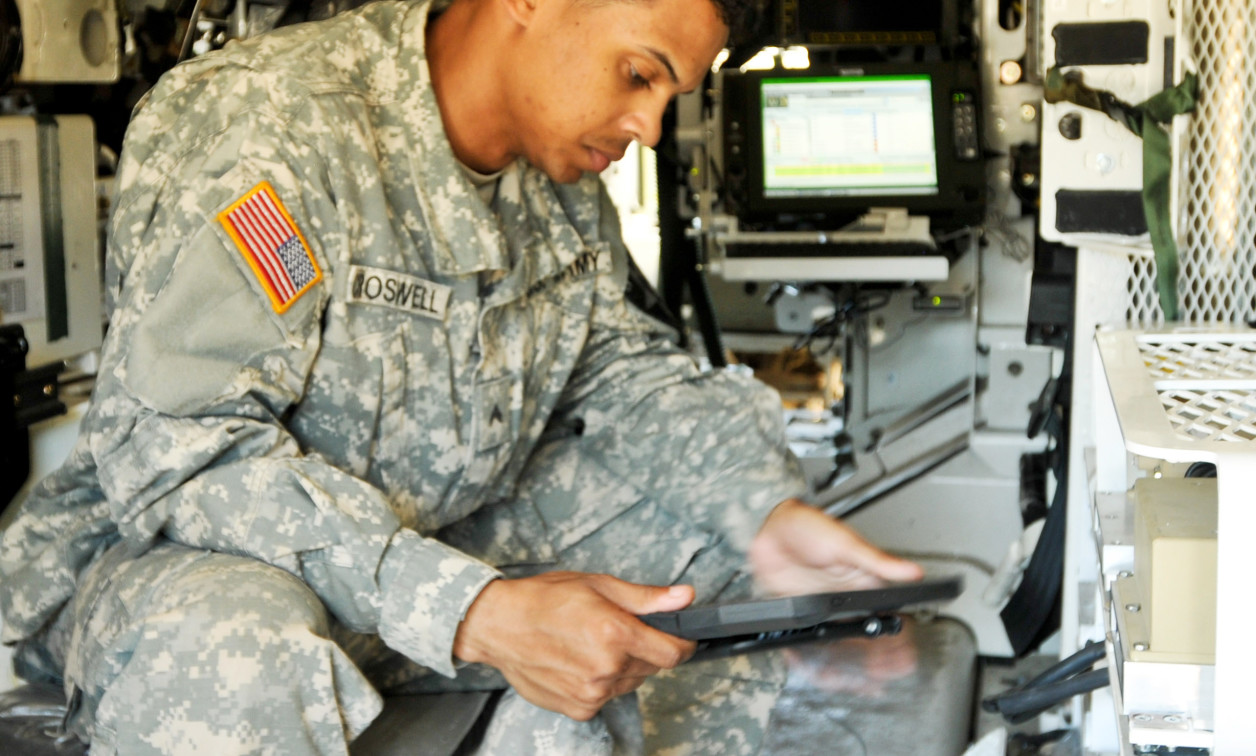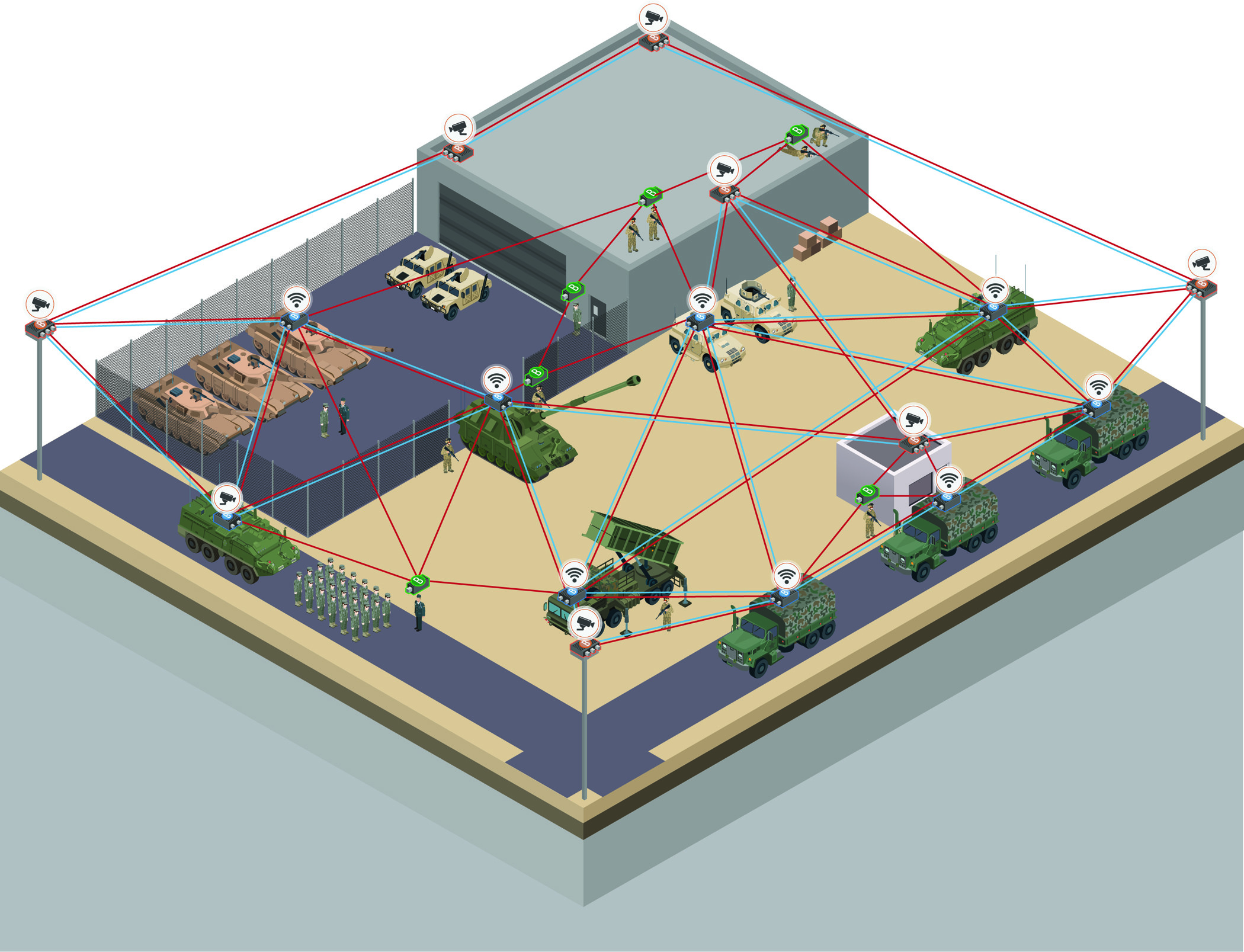The network-centric approach: Solving the challenges of real-time battlefield communications
StorySeptember 28, 2017

To meet the challenges of 21st-century wartime communications, a new approach to collecting and using intelligence called network-centric warfare can provide military operations with information superiority. However, real-time information collection only works with a battle-ready wireless communication system.
Wars in the 21st century are fought asymmetrically – modern soldiers now fight an enemy who is everywhere and nowhere at the same time, who has not been trained in battle formations or military strategy, who does not wear a uniform or use WoRm formulas to calculate where to fire.
Soldiers must be constantly on their guard and ready to fight – and this need for always-on preparedness has changed the way the military collects and uses intelligence, giving rise to what’s called “network-centric warfare” to provide advantages on the battlefield.
A network-centric approach to warfare links all military assets to each other and to decision-makers via computer, radio, and data networks, enhancing the way military objectives are accomplished because of information superiority. According to David S. Alberts, who formerly worked in the office of the Assistant Secretary of Defense for Networks and Information Integration, “A robustly networked force improves information sharing. Information sharing and collaboration enhance the quality of information and shared situational awareness. Shared situational awareness enables self-synchronization. These, in turn, dramatically increase mission effectiveness.”1
A Department of Defense (DoD) text adds that while war will always be characterized by “fog, friction, complexity and irrationality,” network-centric operations provide increased awareness and more informed decision-making: “… Having a better near-real-time picture of what is happening … certainly reduces uncertainty in a meaningful way.”2
Doing so requires a true military-grade network that must provide continuous communication to in-motion and stationary personnel, vehicles, and equipment, giving commanders and troops always-connected, secure access to applications and information and improving situational awareness and mission effectiveness. There is no room for security breaches or outages of any kind when it can mean the difference between life and death, or a war won or lost.
Communications have sometimes been a weak link between the various moving parts of the armed forces, whether between ground, airborne, and seaborne forces, or between forces and nonaligned units such as foreign coalitions or sister services within the DoD. However, this situation has been changing over the course of the past decade as military operations and projects have begun using a network called kinetic mesh.
Solving battlefield communication challenges
A kinetic mesh wireless network combines wireless network nodes and networking software. Such a network uses multiple radio frequencies and any-node-to-any-node capabilities to instantaneously route data via the best available traffic path and frequency, with as fast as 300 Mbps transfer rates.
If a certain path becomes unavailable for any reason – due to antenna failure, for example – nodes on the network use an alternate route to deliver the data, eliminating any gaps in communication and enabling on-the-fly transmission of voice, video, and data to provide situational awareness, despite conditions that would cripple other networks. Routes are built automatically and are evaluated for quality and performance for every sent and received packet.
(Click graphic to zoom)
 |
There is no central control node and no single points of failure. These self-healing, peer-to-peer networks support Wi-Fi, integrate easily with Ethernet-connected devices, and scale to hundreds of high-bandwidth nodes – in fact, the more nodes added, the more pathways are established and the more resilient a network becomes. The nodes are built to withstand hostile environments like battlefields. Each node serves as singular infrastructure, which enables everything within the network to be mobile: Wireless nodes can move, clients can move, network traffic can move – all in real time and without manual intervention.
A kinetic mesh network can be easily redeployed and expanded in multiple ways and still operate with the same level of reliability, even in the harshest conditions. Kinetic mesh eliminates the challenges of time-consuming, complicated deployments in the midst of battlefield pressures, challenging terrain, and changing operations. A soldier doesn’t need extensive training to learn how to set up a radio, and a company no longer needs to lay new cable every time its headquarters moves, which requires personnel hours and taxpayer dollars.
Not to be overlooked is the network’s military-grade level of security (with some radios certified to “Secret and Below” interoperability). Kinetic mesh delivers end-to-end, 256-bit encryption. When encrypted information flows through the mesh and comes out another node, it stays encrypted all the way through, and is not decrypted until it is delivered to its destination, ensuring privacy. At each hop in the network, kinetic mesh provides a per-hop authentication for each packet. Metadata also is encrypted; an attacker cannot analyze the traffic and see which nodes are communicating with other devices – which, in a battlefield situation, could give away position.
Kinetic mesh in the field
Kinetic mesh has been a part of several military programs and projects. Two notable examples include C-RAM and Wolfhound. C-RAM is actually a “system of systems” that primarily uses radar to detect incoming projectiles (rockets, artillery, and mortars) fired from hostile forces. An engagement weapon then attempts to intercept the projectile and destroy it in flight before it impacts.
There also is a warning component to C-RAM; once the radar has determined the trajectory of the projectile, it can determine what kind of shell or projectile it is, as well as its estimated point of impact, to determine the blast radius. It then can send an alert to the affected area, instructing all personnel to seek cover. A soldier has about 10 seconds to find cover before detonation if the projectile is not intercepted in flight – which can mean the difference between life and death.
The C-RAM program was an important countermeasure to enemy fire during the wars in Iraq, where the way the enemy fought made it impossible for troops to deploy counter-fire, because there was simply no one at whom to fire. Instead, the enemy would set up crude stands with rockets on top and use a triggering device to deploy the rockets from afar. It was by no means a scientific method of warfare, but it was intermittently effective, killing or injuring soldiers and disabling military assets.
For the past six years it’s been in use, kinetic mesh has provided the communications link between the radars and the command center, and between the warning towers and the command center. Before kinetic mesh radios were implemented, there was a much higher rate of interference between the various components and the radios, creating gaps in communications. With kinetic mesh radios, system availability rate has increased significantly – meaning that even more human lives will be saved in current and future field operations.
Wolfhound is a man-portable electronic warfare (EW) and cyber capability that has been used to support kinetic operations in Operation Enduring Freedom. The system includes three networked, man-packable wireless nodes capable of detecting, identifying, and direction-finding conventional communications. It targets Very High Frequency (VHF) or Ultra High Frequency (UHF), push-to-talk, handheld radio communications, and is a counter-IED [improvised explosive device] program.
IEDs were used extensively against U.S.-led forces in Iraq and were responsible for nearly 2,000 deaths between July 2003 and January 2009. Since Wolfhound’s inception, however, the program has prevented the detonation of more than 1,000 would-be IEDs and is expected to save many more lives in the future.3
The need for real-time communications in modern warfare
As warfare becomes more unpredictable and asymmetrical, a network-centric approach will be ever more critical – without real-time communications enabling information superiority, all the artillery in the world won’t make a difference. Kinetic mesh networks can provide the mobility, reliability, scalability, security, and high bandwidth needed to ensure mission-critical intelligence is sent and received in real time, breaking new ground in wartime communications and helping to save lives.
Notes
1 http://www.dodccrp.org/files/Alberts_IAT.pdf
2 http://www.au.af.mil/au/awc/awcgate/ccrp/ncw.pdf
3 https://web.archive.org/web/20090113201909/http:/icasualties.org/oif/IED.aspx
Barry McElroy is vice president of Rajant. Before joining Rajant he served a Detachment Commander for the U.S. Army’s Special Operations for 17 years. He can be reached at [email protected].
Rajant • www.rajant.com
Figure 1: A kinetic mesh wireless network instantaneously routes data between nodes via the best available traffic path and frequency. Illustration courtesy Rajant.






